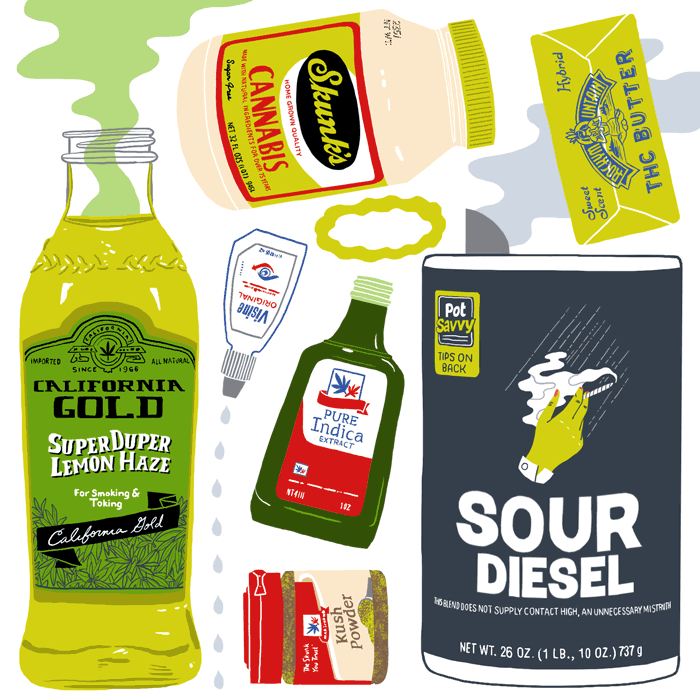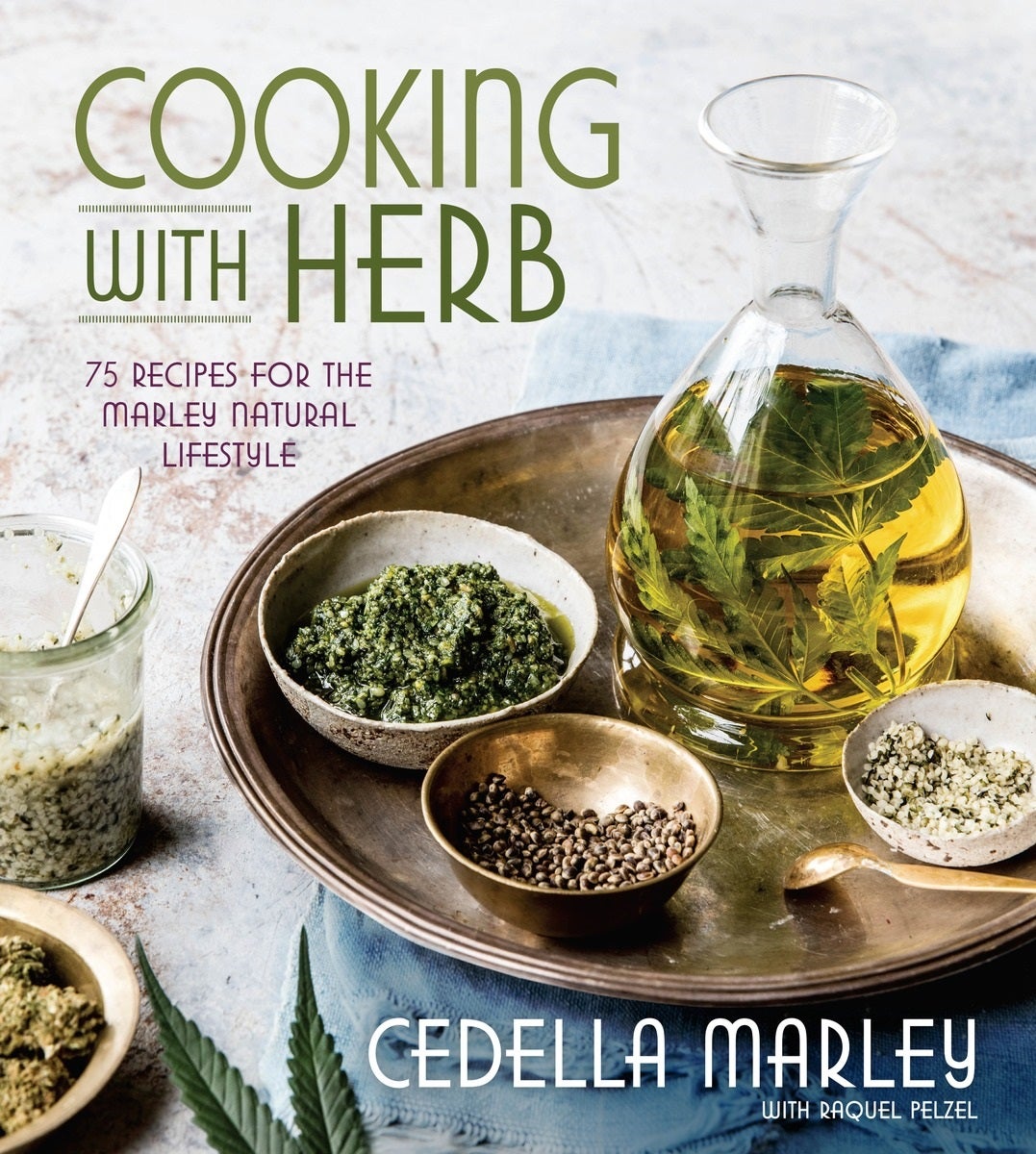
We have moved on from the pot brownie. A former Cook’s Illustrated staffer has cracked the cannabis code. That is, cooking smartly and deliciously with these newly legalized herbs.
I’m sitting at Coquine, a restaurant in Portland, Oregon, and I’m about to score a whole lot of weed. Like, nearly half a pound of it. Some might call this a drug deal. Nope. First, there is no deal being made, because I am offering no money. Second, in my opinion, weed is not a drug but more like basil with benefits. I mean, our bodies even have an entire internal regulatory system—the endocannabinoid system—for receiving and processing cannabinoids (one of which is THC, the cannabinoid that gets you high), making it just about impossible to OD on herb (though you can have a bad experience if you overdo it…like a well-regarded New York Times journalist did).
So why exactly am I in Portland readying myself to receive four quart-size zip-top bags of vacuum-packed Pineapple Kush and Jesus OG? Because I am working on recipes for the cookbook, Cooking With Herb, that I’m collaborating on with Cedella Marley, daughter of legendary herb enthusiasts Bob and Rita and the CEO of Tuff Gong International, the label that her dad and the Wailers founded back in 1970. Cannabis has long been associated with reggae and Rastafarian culture, and the Marley family recently launched a branded line of herb and smoking accessories sold under the label Marley Natural. It only made sense that the family’s love of food and cooking be married with herb now that edibles are becoming so popular where some form of cannabis is legal (26 states plus D.C.).
Cedella turned to me to figure out the best ways to spike her food, and to explain to readers just getting into cooking with cannabis the hows and whys of doing so. With two decades of recipe development experience, and as a former staffer at Cook’s Illustrated, I can honestly say my expertise when it came to cooking with herb going in was nil. Now, ask me anything and I can tell you how—and why.

I spoke to experts and award-winning medical-marijuana patient advocates to find out the best ways to cook with herb. There’s a lot of bunk information out there about cooking with cannabis, along with thousands of web pages devoted to bad recipes and infusion methods that are based on nothing other than “tasted good to me and fucked me up” reasoning. We didn’t want that. We wanted enhanced recipes that offered the same high as having a glass or two of wine.
In the beginning, it was just about re-creating Cedella’s fantastic recipes—like banana fritters, curry rundown, and roti—in my home kitchen. Once they were all tested and vetted, phase two kicked in: Make sure they work with cannabis, make sure they taste good, make sure no one curls up in the corner of the room because I overdosed the recipe.
Since buying and having weed is legal in Portland, it’s where I’ve decamped to cross-test with weed. (I know, my life is tough, but I try to soldier on.) So that’s how I found myself at Coquine with a DEA agent turned edibles kitchen inspector (let’s call him the Inspector) and a cannabis “sourcer” (yes, his job is to hunt down the best strains of weed in the world—I’ll call him The Hunter); they both work with Marley Natural, and Cedella arranged for them to hook me up.
After dinner, The Inspector and The Hunter led me to a pickup truck. The Inspector reached in his car and grabbed a tote bag with a big medical cross emblazoned on one side. He handed it to me. I opened the tote, and staring back at me were four bags, packed and loaded with vibrant green, healthy buds and flowers—more than I’d ever seen or held up to that point. Manna.
Into the kitchen I went to cook up cannabutter, cannaoil, cannabis-spiked spice blends and cannabis vanilla extract. (And a huge thank-you goes out to my friend, let’s call her MJ, whom I stayed with and in whose house I cooked major quantities of cannabutter and cannaoil…and whose husband accidentally ate too much of the jerk caramel corn despite my warnings about dosage and serving sizes! Sorry, MJ’s husband.) This is where I started to unlock the secrets.

In the olden days, people famously crumbled herb into brownie batter and baked it up, yielding what you would call pot brownies. But here’s what I soon realized: You might as well just blitz up some hundred-dollar bills in the food processor and add it to the batter because if that’s your preferred method for cooking with herb, you’re doing it wrong. We’re in the 21st century, and there are better ways. Think infusing weed into butter, coconut oil, or olive oil, or “decarbing” ground herb in a warm oven to activate the THC. When you infuse the herb in hot fat, it is decarbing at the same time—meaning you’re turning on the THC by heating it and removing a carbon atom from the chemical composition of the cannabis. Oven-dried herb (which is also decarbed) can be used as a spice blend or to infuse vanilla extract or alcohol.
Cooking with herb is FUN times, but there is also great responsibility required—infusing butter with herb (or oil, alcohol, or even spices, for that matter) is a time-intensive and pricey process. Depending on where you live, the price of a quarter ounce of weed can vary from the cost of a high-end pizza to the cost of a high-end dinner, so there’s no fucking up allowed. Plus, while there is no evidence of anyone ever overdosing on cannabis, people can ingest too much—and the last thing I want is to send your dinner guests on a horrid-awful trip into the multiverse. Unlike alcohol, orally ingested cannabis takes many hours (sometimes up to 12 or longer) to get out of your system, so a bad experience can be a long-lasting one.
I wish I could say I came up with the drop-dead, end-all method for infusing butter (or oil) with herb, but until the day when someone heads into a lab and pays a lot of money to find out which technique extracts the most THC from herb, it’s all a bit of a guesstimate. The best way to find out how strong your cannabutter/cannaoil/cannaspice is, really, is to eat your experiments. The recipes in Cooking With Herb were all devised to offer 5 mg of THC per serving—that’s a modest amount (for perspective, in Washington state, the legal limit of a single serving of THC in store-bought edibles is 10 mg per serving).
Like alcohol, depending on your tolerance for herb and a bunch of other factors (your metabolism, what you ate that day, whether you’re male or female, etc.), the potency of the serving can hit you hard or soft. It’s best to start with one serving, wait an hour or so, then eat more or hold off as you like. We are entering into a blind-faith zone, so modest dosing is the way to go, and it’s really about the most control you can hope for when dipping into the world of home-spiked foods.
At the end of my Portland testing stint, MJ invited a houseful of people over for a potluck. I cooked a ton of food from the book, most laced with THC (but it’s also important to have non-THC-dosed foods, like nuts, cheeses and dips so no one gets rocked out of their skull). I’ve got to say, it was a great party. Guests ranged from 22 to 75 years old, and they all had the most interesting, witty, hysterical things to say. Everyone was happy and laughing and smiling, and the room was absolutely brimming with positive vibes.
Cooking with herb isn’t about getting stupid stoned. Eating herb-spiked food is something to do with friends, with food that’s delicious and even healthy (no, it’s not all about brownies and cookies and gummies!). It’s about opening your spirit, feeling elevated, receptive and blissful, and, as Cedella might say, it’s about generating an overstanding about your connection to the earth and one another. It’s also about having a really good time and eating some great food while you’re at it.


